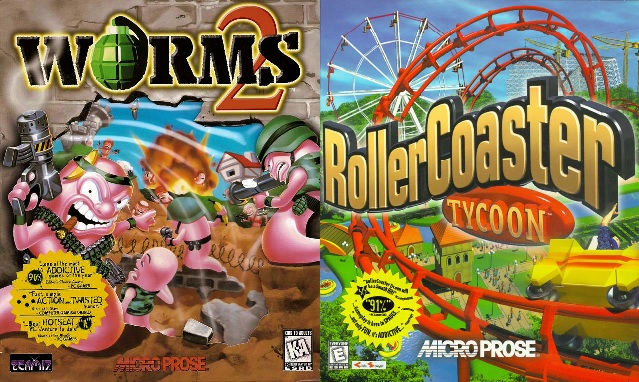The Small Start of Something Big: MicroProse Premiere Hellcat Ace
- baronsfel001
- Apr 17, 2021
- 7 min read
Updated: Apr 17, 2021

Image is box of later Commodore 64 re-release. For Microsoft (then known as MicroSoft) it was Altair BASIC; for Apple it was their original I model that was never even made for the general market; ASCII-based IBM PC games for both Apogee's Scott Miller and Epic's Tim Sweeney; Walt Disney acknowledges that it all started with a mouse in a cartoon short: indeed, what is so great about the innovative leaps and far-reaching impacts made possible by the American free market system is how anyone can rise high from humble beginnings. For Sid Meier, already a veteran of Atari BASIC, it was accepting the challenge from his new friend Bill Stealey to create a game better than Atari's Red Baron which Stealey would then sell. Whether the stipulations of the challenge (particularly the development time) were actually met is beside the point: a simple 3-D shooter meant to be more arcade than simulation began a military simulation giant.
Flight simulations are a unique genre in that their technological advancements proved inversely-proportional to their consumer demand. This is for several reasons, but the appeal of the earlier days ushered-in by SubLogic's original Flight Simulator (later adapted to PC and Macintosh as the initial versions of Microsoft Flight Simulator, but that is another story) seems to this author a matter of the limited 8- and 16-bit computing power only able to immerse the experience so much, thus appealing to both the hardcore crowd (who could push the realism challenges and fill in the gaps with imagination) and the casual (since the limited technology made these games more accessible to non-pilots) together. Once Spectrum Holobyte's Falcon 3.0 set new ground for both PC technology and simulation realism that was the split between hardcore and casual sims; the former would always have only limited market reach, while the latter kept going along for a while but started giving way when Namco's Ace Combat series gained mass appeal with its arcade gameplay that would replace casual sims by the early 2000s.
Hellcat Ace was unapologetically-arcade, based on first-person arcade shooters of the time and not designed to compete with SubLogic (albeit that would come later). In fact, with perhaps the exception of NATO Commander, the entire "MicroProse Challenge" line that dominated the company's first generation of games was meant to bring a dose of original arcade-style gameplay to the computers of the time. When MicroProse found its early success and grew the team beyond Meier and Stealey the reach to other computers grew, however at first it was strictly Meier and the Atari 8-bit line (minus 5200).

A fellow collector possesses copies of Hellcat Ace and NATO Commander in early MicroProse retail packaging. Atari BASIC was required to even run these early titles, limiting accessibility somewhat. Hellcat Ace (and companion game Spitfire Ace) also required 2 joysticks despite being single player, not an uncommon issue with 8-bit console-style flight games: adding keyboard controls would have to wait for actual simulations Solo Flight and F-15 Strike Eagle.
Hellcat Ace is, of course, set in World War II with its 14 scenarios covering the full range of the Pacific Theater from before Pearl Harbor to the more imaginative. While certainly more arcade than simulation, Meier succeeded in going beyond the simplistic Red Baron by having all the scenarios be distinct from one another. Unlike F-15 Strike Eagle which would have the titular aircraft on missions long pre-dating its actual introduction, Hellcat Ace only involves the F6F in a few scenarios corresponding to its real-life service. Different simulated aircraft have different speed, ammunition, and handling properties, both friendly and enemy; dogfight and evade missions are [realistically] much more challenging than interceptions because of the relative quality of the opposition, including the fact that turning dogfights with Zeroes is a bad idea because of their superior agility. There is something much deeper than meets the eye in this game's simplistic graphics that even Meier would later admit were laughable.
Any scenario can be selected at-will with 4 difficulty levels, up to 4 players taking turns in sequence (a feature of questionable usefulness but true to expectations of a home arcade game of the era) and, exclusive to the Atari and IBM versions, whether the player would face 1 or 2 enemy aircraft. The range of options bears a strong resemblance to those of Meier's Formula 1 Racing which is no surprise. Unlike that game, however, there is an overarching goal and sense of progression in that the player strives to become an ace over a series of several missions (though whether those missions are taken in sequence are at player discretion). Offered scenarios are: 1. Intercept unspecified medium bomber(s) in a Flying Tigers P-40 Tomahawk.
2. Intercept unspecified reconnaissance plane(s) in a F2A Buffalo.
3. Dogfight Zero fighter(s) in a Marine F4F-3 Wildcat.
4. Intercept Kate torpedo bomber(s) in a F4F-3 Wildcat (low altitude).
5. Evade Zero fighter(s) in a SBD Dauntless scout bomber.
6. Dogfight presumed Oscar fighter(s) in a F4F-4 Wildcat (low altitude at night).
7. Intercept Val dive bomber(s) in a F4F-4 Wildcat.
8. Intercept Betty medium bomber(s) (acting as VIP transport) in a P-38 Lightning. 9. Dogfight Zero fighter(s) in the F6F Hellcat.
10. Evade Zero fighter(s) in a TBD Devastator torpedo bomber.
11. Dogfighter Zero fighter(s) with ace pilot(s) in the F6F Hellcat.
12. Intercept kamikaze(s) in the F6F Hellcat. 13. Dogfight night fighter(s) in the F6F Hellcat (night mission).
14. Intercept Baka rocket kamikaze(s) in the F6F Hellcat. The immersion effort was definitely there but it still called for some level of imagination. At least the Pacific setting meant having all combat take place over endless water was believable, but limitations made the cockpit and all enemy planes appear identical. A tongue-in-cheek touch (the first of many in MicroProse games) was how mission success would earn a few glorious 8-bit bars of Stars and Stripes Forever while death likewise taunted you with the old Oriental Riff. One nice detail is how guns are fired in bursts with the ammo counter showing number of bursts rather than actual rounds; while later MicroProse simulations would show actual gun rounds in the ammo counter the burst firing would be carried over as a plausible means of how aircraft guns could be used to terminal effect without expending all available ammo too quickly. The arcade aspect has its flaws as well, but for different reasons than technological. While the stated endgame is to become an ace by attaining 5 kills (6 possible in versions that allow for 2 opponents per scenario), the player challenge is to achieve the rank of "World's Greatest Fighter Pilot" by accumulating 10,000 points. Scoring is based on difficulty level and how quickly enemies are destroyed in all missions that do not involve evading fighters, however with no distinction in scoring between kills achieved in tough dogfights versus simple interceptions, this on-paper challenge can be met easily by being selective about which scenarios get played. While no less a form of cheating than the "save scumming" of the 90s and beyond, it means an honest challenge must be entirely self-imposed, and with such a simple game as Hellcat Ace not able to hold onto its novelty for long that may not be found worthwhile.
One of the interesting aspects of MicroProse games from the 80s is how great a proportion of them got at least one form of updated re-release. This author's copy of Hellcat Ace is part of the Top Gunner Collection compilation published 1986, a shovelware diskette that may be the only way of acquiring the later Atari version which was re-written to machine language thus no longer requires BASIC (and has a longer MicroProse games advertisement at the beginning than 1982 contemporaries Chopper Rescue and Floyd of the Jungle). In terms of setup and gameplay, both Atari versions are identical and the most feature-rich relative to this game's ports. In 1983 Hellcat Ace was ported to Commodore 64 by Ron Verovsky and Dale Gray, neither of whom seem to have much of a gaming resume but were clearly more tuned to the C64 than Sid Meier at the time. Less powerful than competing Atari but quickly proving its consumer appeal ports to C64 were a logical choice, but in those earliest days (typical for systems that are new to market and need time to be exploited well) it had to be a matter of tuning software to the particulars of the hardware. Hellcat Ace is a key example of this being done to create a unique version worthwhile on its own: while load times were much longer and C64 is the only port to not include the 2-opponent option, this was made up for by having a more graphical cockpit (albeit more like simply adding a canopy overlay). The gaming challenge is made more pure by the fact that only one enemy can be faced at a time, necessitating at least 5 missions to achieve ace. Among MicroProse's early IBM PC (and compatible) releases was a port of Hellcat Ace in 1984 by R. Donald Awalt who spent a couple years at the company handling several of their Atari to IBM PC conversions. On the more powerful 16-bit machine the 2-opponent option was restored, however for a system not designed with gaming in mind the CGA graphics and PC Speaker sound leave something to be desired. It offers a [marginally-]higher resolution and plays well enough in any system from the era of games that booted on PC directly (instead of working through DOS), but this is most certainly not the definitive version of Hellcat Ace and is not recommended for a system much faster than the original IBM spec of 4.77 MHz. On the positive side, this is the only version that can be played via keyboard without requiring a joystick because it still only uses digital controls; this consideration for PC games was common since, again, the IBM PC was not made for gaming and it was not assumed players would have a joystick available. A note for those who emulate Hellcat Ace for PC: use of DOSBox is not recommended because of the shortcomings of its PC speaker emulation. For both historical significance and gameplay depth Hellcat Ace is a recommended play for an hour or two, either the original Atari or well-adapted Commodore 64 edition. Use of emulators pre-empts the joystick requirement as it is a cinch to translate the digital controls to keyboard (or better: gamepad), keeping in mind that the second joystick is used for throttle but this is one of those games built so that auto-centering is not an issue. Just remember (if you happen to try both versions) that joystick port setup on C64 is reverse of that on Atari.
Atarimania page for the original BASIC Hellcat Ace: http://www.atarimania.com/game-atari-400-800-xl-xe-hellcat-ace_2429.html Atarimania page for Top Gunner Collection featuring the non-BASIC update of Hellcat Ace: http://www.atarimania.com/game-atari-400-800-xl-xe-top-gunner-collection_1262.html
Gameplay of Hellcat Ace for Atari (not my own): https://www.youtube.com/watch?v=CwYaQS59UGQ
Gameplay of Hellcat Ace IBM port (same player): https://www.youtube.com/watch?v=a_DSF7za2r0
GameBase64 entry for Hellcat Ace shows enhanced graphics: http://www.gamebase64.com/game.php?id=20270





Comments